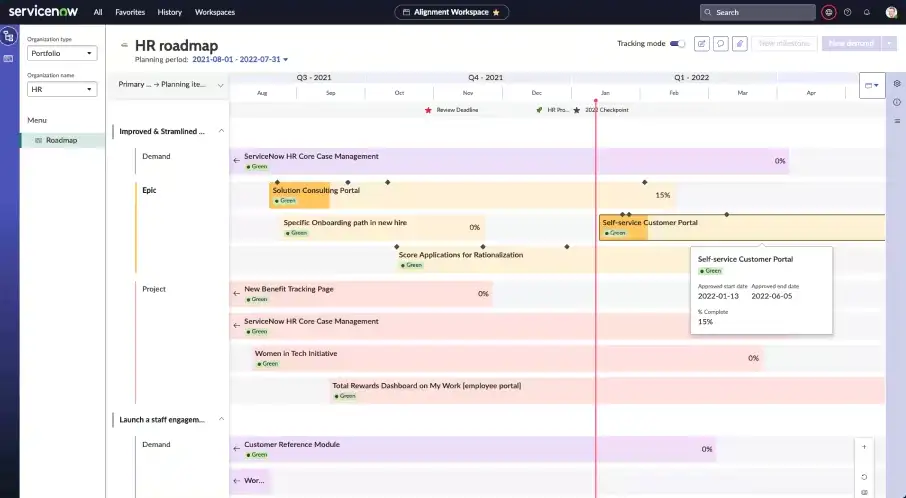Project Portfolio Management (PPM) is a strategic approach that allows organizations to effectively manage and prioritize their projects, ensuring alignment with overarching business goals and objectives. PPM involves the centralized coordination and control of project portfolios to optimize resource allocation, mitigate risks, and maximize returns on investment.
Key Components of PPM:
- Project Selection: PPM begins with the careful selection of projects that align with an organization’s strategic objectives. Projects are evaluated based on their potential impact, alignment with corporate goals, and available resources.
- Prioritization: Projects are prioritized according to their strategic importance and expected benefits. High-priority projects receive more attention and resources, ensuring that critical initiatives are successfully executed.
- Resource Allocation: Efficient resource allocation is a cornerstone of PPM. It involves assigning the right people, funds, and equipment to projects, optimizing resource utilization, and preventing resource bottlenecks.
- Risk Management: PPM includes robust risk assessment and mitigation strategies. Identifying and addressing potential risks early in the project lifecycle helps minimize disruptions and ensures project success.
- Performance Monitoring: Continuous monitoring and reporting on project performance are essential. Key performance indicators (KPIs) are tracked to assess progress, identify issues, and make data-driven decisions.
- Portfolio Optimization: PPM seeks to maximize the value of the project portfolio by periodically reviewing and adjusting project priorities. Underperforming projects may be deprioritized or terminated, while new projects aligned with strategic goals can be added.
Benefits of PPM:
- Strategic Alignment: PPM ensures that projects are directly aligned with an organization’s strategic objectives, contributing to the overall success of the business.
- Resource Efficiency: Efficient resource allocation minimizes waste and optimizes productivity, leading to cost savings and improved project outcomes.
- Risk Mitigation: Early identification and management of risks reduce the likelihood of project delays and budget overruns.
- Improved Decision-Making: PPM provides decision-makers with real-time data and insights, enabling informed choices that enhance project success.
- Enhanced Collaboration: PPM fosters collaboration among project teams and stakeholders, promoting transparency and effective communication.
Industries Using PPM:
- Information Technology: IT organizations use PPM to manage complex software development projects, ensuring they meet business needs.
- Construction: Construction companies benefit from PPM by efficiently coordinating resources and schedules for large-scale projects.
- Healthcare: PPM helps healthcare organizations manage projects related to patient care, facility expansion, and technology integration.
- Finance: Financial institutions use PPM to optimize investment portfolios, assess risk, and drive financial strategies.
Why PPM Matters:
In today’s competitive landscape, effective PPM is essential for organizations aiming to thrive and innovate. It enables the execution of projects that are strategically significant, minimizes resource waste, and fosters adaptability in a rapidly changing business environment. Successful PPM empowers organizations to deliver projects on time, within budget, and with maximum impact.
Embrace the power of Project Portfolio Management to elevate your organization’s project management strategy, drive business growth, and achieve sustained success.




